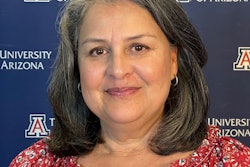MEXICO CITY
The art students in white smocks bend over detailed engravings and squint at their canvases amid rows of easels. Their paintings many of which recall the work of expressionist masters now tour museums in the U.S. and Europe, impressing connoisseurs of fine art.
But this is the Mexican School of Down Art, where all the students have Down syndrome, and their accomplishments are wiping away preconceptions about what mentally disabled people are capable of, particularly in the developing world where resources for the handicapped are scarce and many struggle to be treated with dignity.
Their paintings and lithographs “shatter the stereotype that individuals with Down syndrome have no interior mental life of richness and complexity,” said Dr. David Braddock, who oversees cognitive disability research at the University of Colorado and who helped bring their artwork to the Boulder Museum of Contemporary Art.
About one in 800 babies is born with Down syndrome, a genetic disorder that causes mental retardation, facial deformity and, often, serious heart defects.
And while not everyone with Down syndrome is artistic, art instructor Daniel Perez says his students’ disability helps them see the world more creatively. He sees them transform verbal shortcomings into symbolic art, with a fresh perspective that shines through in their paintings.
“They have a capacity, a sensitivity, for art: They’re very creative,” Perez said. “Their limitations enable them to see the world in a way you and I don’t.”
Perez says his students’ talent blew away his preconceptions about people with disabilities. He holds up an incredibly detailed engraving of a bull and bullfighter as an example: “Looking at a piece of art like this makes you realize that they’re capable of anything.”
The school is part of the John Langdon Down Foundation, a nonprofit founded in 1972 that provides education, counseling and medical care to 500 low-income students with Down syndrome in Mexico City.
In 1995, they added occasional art classes, and discovered the students “were doing wonderful things,” said Sylvia Garcia-Escamilla, the foundation’s president and founder. “My friends who are artists told me: Hey, Sylvia, this is something special.”
She quickly built the art classes into a full-time art school for about 25 adults, aged 18 to 54. The students not only get technical instruction, but take classes in art history, meet with other Mexican artists and tour art exhibits. These interactions and the international acclaim for their work have proved real confidence-builders.
“They’re no longer competing on a playing field where they can’t achieve the same goals as other people,” Garcia-Escamilla said.
These artists all have their own styles, although many tend toward expressionism and bright colors. Lorena Velez, a student working on a black, gray and bright-blue painting of her balcony this month, said she favors strong tones and nature scenes.
“Music, romantic music, inspires me to paint,” Velez said. “My themes are landscapes, animals and the countryside.”
Such vivid colors and broad brush strokes captivated Swiss artist and pediatrician Christine Aebi who brought 28 of the paintings to Switzerland for a 10-day show she organized at Bern’s Paul Klee Museum in September 2006.
“I was positively shocked by the beauty of the paintings: It was something like when I saw Klee’s paintings for the first time,” says Aebi, who has treated Down children. “There’s no intellectual filter between what they’re expressing and what they’re seeing.”
The exhibit was so popular that it was extended to Copenhagen, Denmark, and moves next to Warsaw, Poland.
With more than 90 percent of its students coming from poor families, the foundation depends on funding from grants, donations and money raised selling prints, postcards and calendars of the students’ artwork.
None of the originals are for sale, however Garcia-Escamilla says the school is saving them for a museum it hopes to build.
On the Net: http://www.fjldown.org.mx/en/index.html
© Copyright 2005 by DiverseEducation.com















